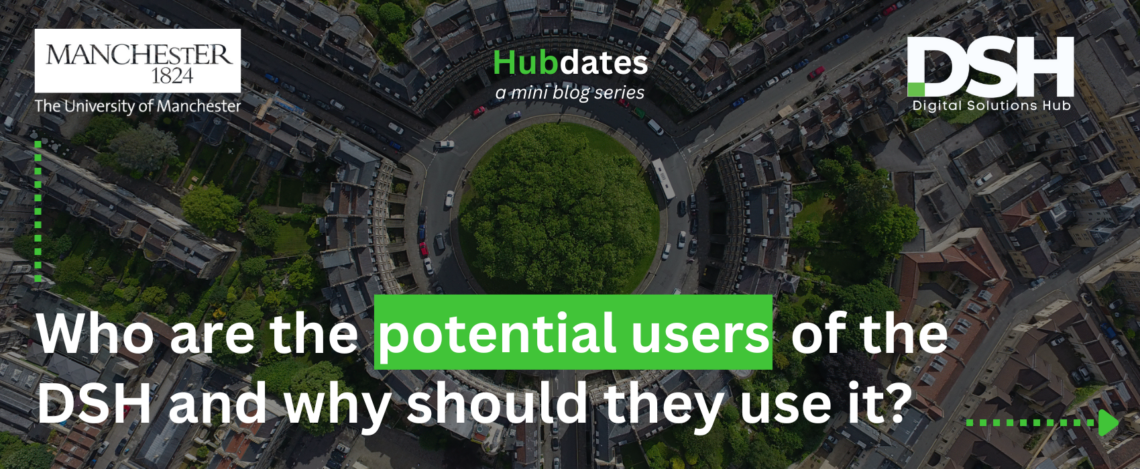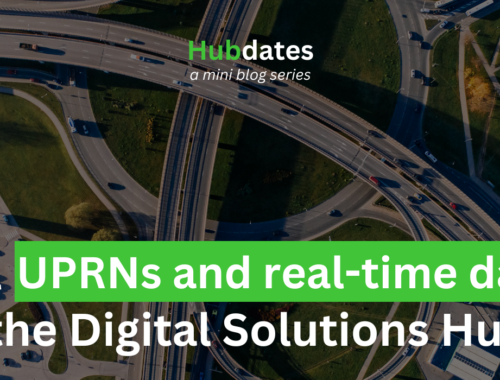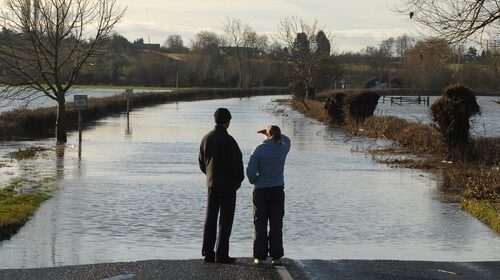
Hubdate #4 – Digital Solutions Hub: Who are the potential users and why should they use it?
Welcome to the fourth instalment of Hubdates – our mini blog series exploring and explaining features of the NERC Digital Solutions Hub (DSH). This Hubdate looks at why the DSH was created, who it is for and how it will be of value to them. You can uncover more about the DSH by reading our previous Hubdates.
Why was the Digital Solutions Hub created?
The Digital Solutions Programme is funded by the Natural Environment Research Council (NERC) who want to enable better access to their vast amounts of environmental data. The 40+ petabytes of environmental data held in NERC’s five data centres is not easily searchable and thus is under-utilised, despite the data holding great value and potential for use.
Through the programme, academics across different departments from The University of Manchester have come together to develop the Digital Solutions Hub (DSH). The primary aim of the DSH is to make NERC’s environmental data follow the FAIR principles – findable, accessible, interoperable, and reusable – essentially so that anyone would be able to find and use their data.
What sets the DSH apart from other digital hubs is the integration of a wide range of other environmental, social, health and economic data, alongside the 40+ petabytes of NERC’s environmental data. Users will be able to search for, visualise and analyse all this data within the Hub to facilitate data-informed decision making, leading to better outcomes for policy and planning.
Who will be able to use the Hub?
The DSH will be an online open-access resource available for anyone to access. Its users could include:
- civil servants
- local government officers
- members of the public
- academics
- town planners
- health/environmental analysts
- charities
- public organisations
- any other interested party who may benefit from access to a wide range of environmental, social, health and economic data.
Is the data free to use?
Most of NERC’s data is free to access for non-commercial use. This means users can access it to use in research, policy, or public service. However, some data integrated on the Hub is highly sensitive and therefore might be subject to licensing restrictions and some cost. While users search the DSH for data, they will be signposted to which data is free, which is not, and how to acquire data that has associated restrictions.
What value will the DSH provide to its users?
1. Easy to use and efficient access to a large quantity of data
The DSH will unlock access to data that was previously not easy to find, as well as allowing users to supplement NERC’s data with other relevant datasets all in one convenient online toolkit. The Hub’s search function, which uses AI and large language models, will enable users to ask a ‘Google’ type question for the data they are looking for, and the Hub will bring up a list of relevant data sets from the vast amount of trusted sources that it draws from. It will allow users to not only search for the data that they are looking for, but discover other data sets they may not know they were seeking.
2. Time saving in analysis
The Hub does not just provide users with a long list of data sets, it also allows the data to be mapped and visualised in the Hub itself. This saves users time in their data analysis as there is no need to extract the data, format it and analyse it elsewhere. The DSH does all this work for you. Using Geographic Information Software (GIS), the online toolkit will also allow users to tell a story with data – going beyond just simple analysis.
3. Use cases to demonstrate the Hub’s capabilities
The ‘climate ready nation’ and the ‘healthy nation’ are two initial use cases that will be available on the DSH that will demonstrate the art of the possible when it comes to what the Hub can do.
The ‘climate ready nation’ will focus on housing – ensuring that new housing developments account for sustainability, social and economic factors in the planning stage. This will support local authorities to make evidence-informed decisions on where to build the 1.5 million new homes that the government has pledged to build by 2029, whilst ensuring their sustainability.
The second use case, ‘healthy nation’, will concentrate applications on air pollution and health. One potential benefit of this use case may be for NHS trust staff to monitor real-time air pollution levels in their area using data available on the Hub. In doing so, NHS trusts will be able to more effectively respond to incidences of poor air quality by ensuring more staff are put on shift for expected increases in admittance to A&E for respiratory problems.
Are you interested to try the Hub when it is launched, later in 2025? Sign up to our mailing list to be on our early-access list.
If you have any questions about the NERC Digital Solutions Hub, how it works, or maybe you have queries about what other data will be available to you on the DSH? Please do get in touch, we would be delighted to answer your questions.
You May Also Like

Hubdate #2 – Real-Time Data and UPRNs
24 January 2025
Data and Decision Making: how AI and data tools can help influence evidence-based policy change.
13 July 2023
